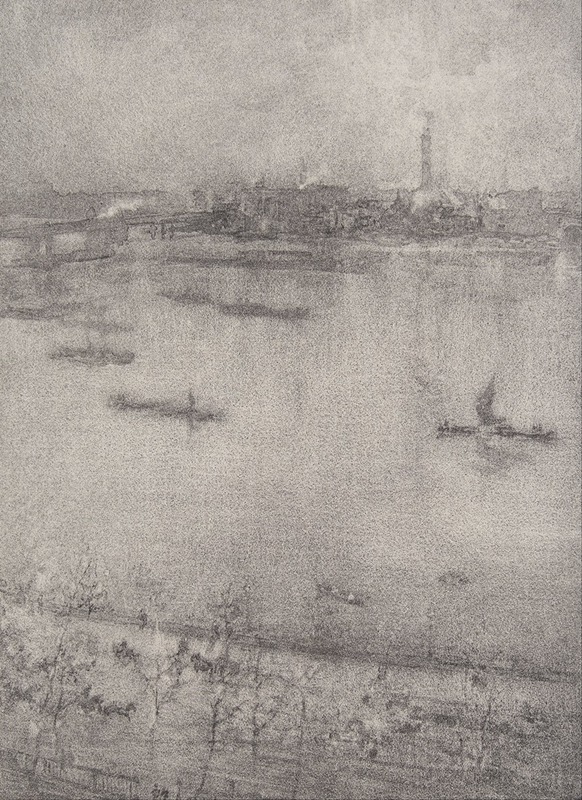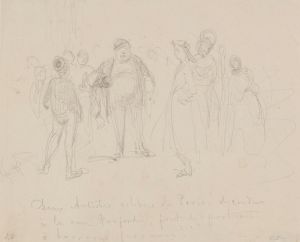
The Thames
A hand-painted replica of James Abbott McNeill Whistler’s masterpiece The Thames, meticulously crafted by professional artists to capture the true essence of the original. Each piece is created with museum-quality canvas and rare mineral pigments, carefully painted by experienced artists with delicate brushstrokes and rich, layered colors to perfectly recreate the texture of the original artwork. Unlike machine-printed reproductions, this hand-painted version brings the painting to life, infused with the artist’s emotions and skill in every stroke. Whether for personal collection or home decoration, it instantly elevates the artistic atmosphere of any space.
James Abbott McNeill Whistler's "The Thames" is a notable work by the American-born artist, who spent much of his career in Europe. Whistler is best known for his contributions to the Aesthetic Movement, which emphasized art for art's sake and prioritized beauty and composition over narrative content. His work on "The Thames" reflects his interest in capturing the atmospheric qualities of the river and the bustling life along its banks during the late 19th century.
Whistler moved to London in 1859, and the River Thames became a significant source of inspiration for him. The river, with its ever-changing light and industrial activity, provided a rich subject for Whistler's exploration of color and form. His depictions of the Thames are part of a broader series of works that include paintings, etchings, and pastels, all of which capture the essence of the river and its surroundings.
One of the most famous pieces in this series is "Nocturne: Blue and Gold – Old Battersea Bridge," which exemplifies Whistler's innovative approach to painting. In this work, Whistler uses a limited palette and soft, blurred forms to create a dreamlike vision of the Thames at night. The painting is characterized by its subtle gradations of color and its emphasis on mood and atmosphere rather than detailed representation. This approach was influenced by Whistler's interest in Japanese art, particularly the use of space and simplicity.
Whistler's Thames series also includes several etchings, which are part of his "Thames Set," created between 1859 and 1871. These etchings depict various scenes along the river, from the bustling docks to quiet stretches of water. Whistler's etchings are noted for their intricate detail and ability to convey the vibrancy of life along the Thames. His skillful use of line and composition in these works demonstrates his mastery of the etching medium.
The reception of Whistler's Thames works was mixed during his lifetime. While some critics appreciated his innovative techniques and atmospheric effects, others were less enthusiastic, preferring more traditional representations of the river. Despite this, Whistler's work on the Thames has had a lasting impact on the art world, influencing subsequent generations of artists who sought to capture the essence of urban life and the natural environment.
Whistler's focus on the Thames also reflects broader themes in his work, such as the interplay between nature and industry and the exploration of modernity. The river, as a symbol of both continuity and change, provided Whistler with a rich subject for his artistic investigations. His depictions of the Thames continue to be celebrated for their beauty and their ability to evoke the unique character of London during a time of rapid transformation.
Today, Whistler's Thames paintings and etchings are held in major art collections around the world, including the Tate Britain in London and the Freer Gallery of Art in Washington, D.C. These works remain an important part of Whistler's legacy, showcasing his innovative approach to art and his enduring fascination with the River Thames.


















